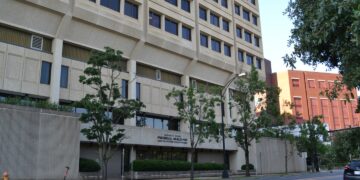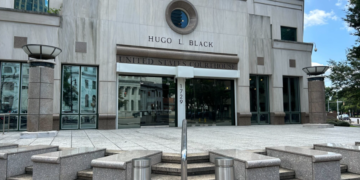August 20, 2025 Story by: Publisher
Texas State House of Representatives voted Wednesday, August 20, to give initial approval to redrawn congressional map that would create five new GOP seats in Congress. The new map aims to flip five Democratic-held U.S. House seats in the 2026 midterm elections. The vote followed a two-week walkout by dozens of Democratic lawmakers, which had temporarily delayed the bill’s passage.
Democratic lawmakers left the state on Sunday, August 3, in an effort to prevent a vote on the proposed congressional maps, which is projected to add five additional seats in the U.S. House. The dispute highlights ongoing tensions over redistricting ahead of next year’s midterm elections.
The maneuver, undertaken by most of the Texas House’s 62 Democrats, deprives the Republican-controlled chamber of a quorum — the number of lawmakers needed to function under House rules — ahead of a scheduled vote on the draft map. The 150-member House can only conduct business if at least 100 members are present, meaning the absence of 51 or more Democrats can bring the Legislature’s ongoing special session to a halt.
A Texas House redistricting panel approved a new congressional map on August 1, designed to create five additional GOP-leaning seats, solidifying Republican influence in the state’s U.S. House delegation. The map advanced on a strict party-line 12–6 vote, moving it closer to a full chamber vote as early as next week. The plan targets urban Democratic strongholds including Austin, Houston, and Dallas, reshaping district lines in South Texas and beyond to favor Republican performance.
Rep. Todd Hunter (R‑Corpus Christi), sponsor of House Bill 4, made no attempt to hide the partisan intent behind the plan. He explicitly stated that the goal was to use “political performance” as a benchmark, asserting the new lines would convert several districts into safe Republican victories—each projected to have delivered a Trump win by at least ten points in 2024.
State Democrats had few options to resist: delaying the legislation by denying quorum now carries a $500 per day fine, and quorum-busting walkouts were made politically risky due to concurrent flood-relief legislation. Across the state, prominent Texas Democrats—including Reps. Jasmine Crockett and Lloyd Doggett—denounced the map as racist gerrymandering, pointing out that some members are being drawn out of their own districts.
In 2024, Trump won 56.2% of votes in Texas. Under the current lines, Republicans hold 66% of Texas’ 38 House seats. The new map aims to push that share to 79%.
Texas state Republicans on Wednesday, July 30 unveiled a new congressional map that would give the GOP a clear path to flip five U.S. House seats currently held by Democrats—solidifying their grip on power ahead of the pivotal 2026 midterms.
The proposed map was filed by state Rep. Todd Hunter, who represents a coastal area in southeastern Texas and is a member of the state House Select Committee on Congressional Redistricting created last week as part of the special legislative session called by Republican Texas Gov. Greg Abbott.
But this time, with Republicans controlling both chambers of the Legislature and the Governor’s Mansion, they’re seizing the moment to expand their congressional majority from 25 to potentially 30 of the state’s 38 seats.
The GOP’s new map targets Democratic strongholds in Austin, Dallas/Fort Worth, Houston, and South Texas—reconfiguring districts to slice through liberal population centers and fold them into Republican-leaning suburbs and rural areas.
The new map targets Democratic-held districts in heavily urban metro areas—including Austin, Dallas/Fort Worth, Houston, and South Texas.
What is Texas’ House Bill 4
Texas’ House Bill 4 is a mid-decade congressional redistricting plan emerging from the 89th Texas Legislature’s second special session. It’s explicitly designed to redraw all U.S. House of Representatives districts in Texas, replacing prior maps, and is intended to take effect for the 2026 primary and general elections.
Key Details from the Legislation
- Adoption of PLANC2333: HB 4 utilizes a new mapping schema—PLANC2333—from the Texas Legislative Council. These maps are based on 2020 Census data and are precisely defined using geographies like census blocks and tracts.
- Repeal of Previous Maps: The bill repeals all existing congressional redistricting laws, including the 2021 map enacted during the 87th Legislature’s special session.
- Implementation Timeline: The new map will apply only to the elections beginning in 2026, leaving current district alignments unaffected until then.
Major changes affect:
- Districts of Reps. Julie Johnson and Marc Veasey in the Dallas/Fort Worth region, reshaped to weaken Democratic bases. Rep. Marc Veasey, who represents a majority-Black district in North Texas, sees his district splintered into pieces that dilute Black voting power—sparking immediate backlash from civil rights groups and Democratic lawmakers.
- The 9th and 18th districts in Houston, consolidating Rep. Al Green’s district with a vacancy and effectively shifting toward GOP voters. Rep. Al Green’s Ninth Congressional District in Houston would now be combined with the vacant 18th Congressional District to form a 61 percent Hispanic district in eastern Harris County, one that Trump would have won by 15 points.
- Districts held by Reps. Henry Cuellar and Vicente Gonzalez in South Texas—both heavily Hispanic and now projected to lean Republican under the new configuration.
- A projected new Austin–San Antonio swing seat, pitting Reps. Greg Casar and Lloyd Doggett potentially against one another, leaving one Democratic district in the region
Under the proposed boundaries, Trump would have carried 30 districts in Texas in 2024 by margins of 10 percentage points or more—a key indicator of GOP electoral strength under these lines.
Four of the five newly drawn GOP seats would be majority-Hispanic, including parts of South Texas and Houston—evidence of shifting reputational strategies targeting Hispanic voters.
Republicans assert the map creates two majority-Black districts (in Dallas and Houston) and adds one additional majority-Hispanic district—though critics argue this is a pretext for voter dilution.
Among the new majority-Black districts is the 18th Congressional District, centered in Houston, which has been represented by a decades-long run of renowned Black Democratic members, including Barbara Jordan, Mickey Leland, Sheila Jackson Lee and, most recently, Sylvester Turner, whose death in March left the seat vacant. The map proposes to pack even more Democratic voters into the solidly blue seat: Harris won the district with 69% in 2024 and would have carried it with 76% under the new boundaries.
The 18th District was among Texas’ four majority-minority congressional seats flagged by the U.S. Department of Justice as unconstitutional racial gerrymanders, a charge Texas Republicans have interchangeably denied in court and cited as the basis for pursuing mid-decade redistricting.
Any new map will inevitably be challenged in court. Courts have found that at least one of Texas’ maps violated the Voting Rights Act every decade since it went into effect in the mid-60s. The current map is still being challenged in federal court in El Paso, with no verdict yet reached.
Source: Politico / Texas Tribune / Texas Policy Research

















